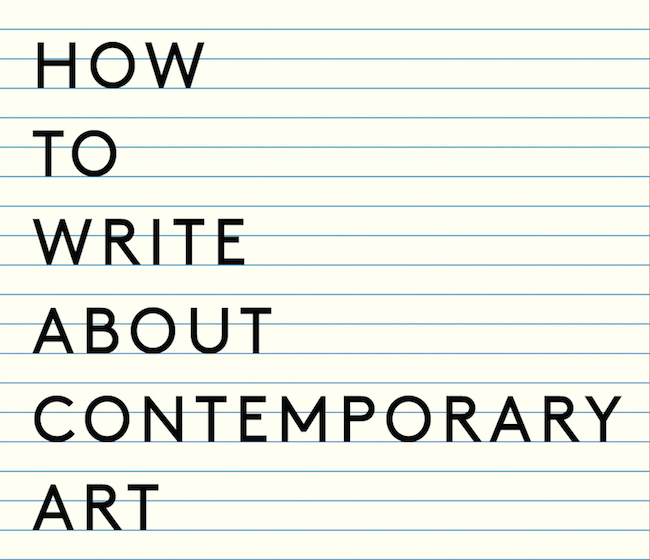CFile has a practical approach to art writing, probably because most of our staff are former journalists. We value a plainspoken, conversational style, favoring concrete images and descriptions over heady abstractions. The purpose of writing is to communicate and so we are often left wondering who some other art writers believe they are speaking to. We frequently come across dense bricks of text that read as though the writer was trying to complete a bingo card of art jargon. The word “morphology” would be the free space on this card and we doubt that half the people who use it actually know what it means.
In the interest of enhancing the discussion about contemporary ceramic art, it would benefit all word-slingers to hone their craft. Hyperallergic tipped us off to two books, How to Write about Contemporary Art by Gilda Williams and The Elements of Academic Style: Writing for the Humanities by Eric Hayot. The former seems to speak to writers like ourselves who are attempting to engage a broad audience while the latter is more academic.

Critic Louis Bury states of How to Write about Contemporary Art:
Accessible, well-organized, and example-rich, How to Write provides a welcome refresher course for writers who might not have known they need one. Most how-to books about art writing are pitched toward students, but Williams tilts hers more toward early career arts professionals, who occupy the sweet spot of knowing just enough about art and about writing — but not so much — that they’re liable to get themselves into trouble. She relies on the catch-all convenience of the term “art writer” over more specific terms like critic, blogger, historian, gallerist, or journalist, and the book’s ambit reflects the term’s capaciousness. Structured into three sections — “Why Write about Contemporary Art,” “How to Write about Contemporary Art,” and “How to Write Contemporary Art Formats” — the book contains material that will be relevant to newer art writers whatever their particular concerns.
He goes on to state that Williams, a correspondent for Artforum, has a keen eye for traps that many writers fall into. Our favorites are what she calls “yetis,” descriptions such as “bold yet subtle” or “comforting yet disquieting.” We didn’t notice this until she pointed it out and now we’re afraid we’ll start seeing it everywhere we look.

Hayot’s work is an attempt to give academics an edge in a small and intensely competitive field. Bury states:
Talent and ambition are not in short supply in humanities Ph.D. programs; the obstacles to success are more often structural in nature. The increasing scarcity of full-time academic teaching positions, perhaps the biggest structural obstacle, has been well-documented. Hayot focuses instead on a subtler stumbling block: how the training that doctoral students receive in writing is haphazard at best and oftentimes detrimental. Absent rigorous formal training, students must figure things out as writers through instinct, emulation, trial and error. The ones who happen to reinvent, gaspingly, the breaststroke are the ones whose careers remain afloat.
You can read Bury’s full review here.
Bill Rodgers is the General Editor of CFile.
Love contemporary ceramic art + design? Let us know in the comments.

Add your valued opinion to this post.